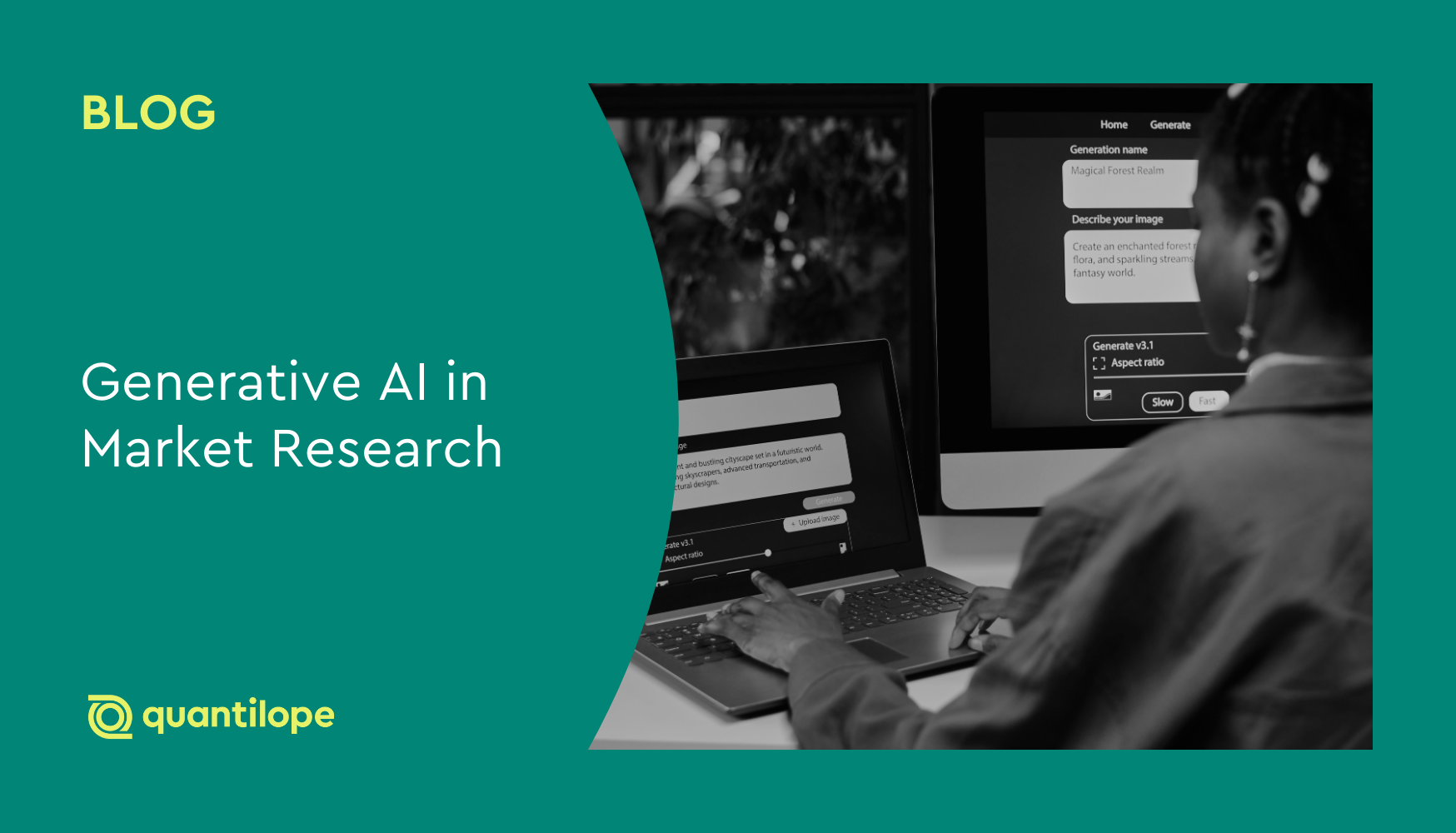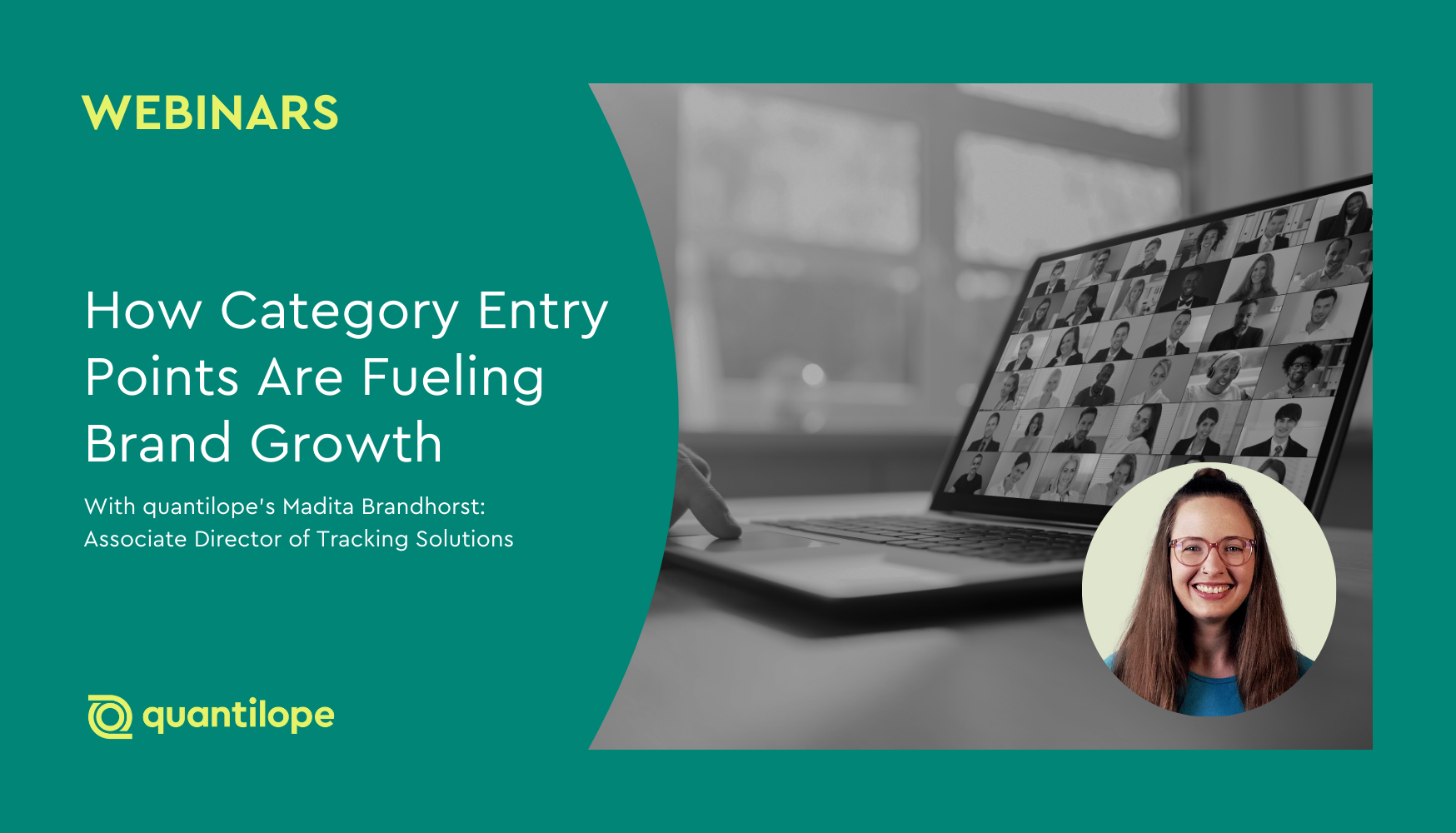This blog explores how market research can benefit businesses in the retail industry - informing them of industry trends, consumer sentiments, and product preferences.
Market research is crucial for any retail business. The retail industry’s main challenge is to find the right products and present them in a way that will encourage purchase, so listening to consumers is central to understanding what motivates their choice. From product to packaging, pricing to advertising, or store layout to web design, retail market research helps guide retail decisions that will appeal to consumers and maximize sales for businesses.
Table of Contents:
- Why is market research important for retail companies?
- How to perform market research for retail
- Market research methods for the retail industry
- Grow your retail business through market research
Why is market research important for retail companies?
Retail is an ever-evolving industry. As retail stores compete for consumers’ dollars in an age of high inflation, stocking the right products at the right price creates a competitive advantage. To know which products and price points are right, businesses need to be aware of what their customers are looking for as well as what the competition is offering. Market research is the link connecting businesses to consumer insights - such as who a business’s target market is, where those people are shopping, the latest trends, consumer spending habits, what consumers want from the purchase experience, and so on. A clear knowledge of these issues will feed into a strong marketing strategy for retail companies. Contrarily, a brand that opts not to keep up with its consumers will quickly lose its market position.
Below are just a few reasons why market research is so imperative for retail companies:
Clarifies the target audience
Brands can’t be everything to everyone, so making sure you are resonating with your specific target audience is crucial. Retail market research will allow you to continually keep an eye on which demographic groups and customer segments react most positively towards your products. Though many types of research can achieve this, a brand tracker is a great tool for retail companies. This tracker can be run at different intervals (quarterly, yearly, etc.) and can let you know which brands from your portfolio (or competitors’) consumers are most often purchasing, why they choose those products, the associations they have with each brand, and which audience segments respond most favorably to your offering. As trends evolve, a brand tracker allows you to monitor that evolution over time.
Improves customer experience
The most direct way to learn how consumers experience your brand and your store experience is to ask them directly. Whether you have brick-and-mortar stores or e-commerce sites, studies can easily be crafted to find out exactly how consumers rate their experience with each. Brands might ask: Are there pain points in the layout of the store or website?; Do people find it difficult to find sales associates or online customer support?; Are customers walking out of the store or dropping off a website at certain points because they can’t find what they are looking for? Learnings from these types of studies go a long way toward improving the overall customer experience.
Helps launch new products
The budget required to launch a new project can be substantial, so how can you be sure that the product will succeed? Consumer feedback will provide the confidence you need to launch something new to your brand portfolio. Tracking methodologies help keep an eye on trends and needs, but developed product concepts can also be presented to consumers for feedback. Methods like MaxDiff can be beneficial to see what colors, styles, looks, etc., are most/least favorable to an audience. Meanwhile, using a TURF method will allow you to create a product range that will reach the highest possible number of people in your target audience; this helps determine if your product ideas have the potential to earn a place in your consumers’ shopping cart.
Market research can also help create benchmarks against which to compare new product concepts. Testing new products or product ideas against previous ones (in a benchmarked study that can be continually referenced over time) reveals what level of success you can predict for a new launch, based on historical results.
No matter which method you use, market research can help improve your market share and make sure you are maximizing the number of your products in your customers’ baskets at checkout.
Back to Table of Contents
How to perform market research for retail
How you go about organizing market research for your retail business depends on what aspect or area you are keen on understanding more closely. This is covered in more detail in the research methods section below. However, there are three broad areas for research that will provide fundamental knowledge of the marketplace within which you operate. Collecting market research data in these key areas will give a good sense of the landscape in which you can design, develop and promote your offer.
1. Gather information about your industry
First and foremost, understanding what characterizes your industry, and particularly the area of retail in which your company works, is essential information for creating a relevant offer. You’ll need to know whether your sphere of retail is in growth or decline, the challenges it faces, and the opportunities to leverage. Secondary research - such as trade journals, government data, or other publicly available consumer research studies - can be useful here.
2. Understand your customers
In the end, whether your business succeeds or fails will come down to your customers and their response to your products. If you don’t please them, you’ll lose them. Know what makes consumers happy: why they buy from a retailer like you; what sort of in-store experience they are looking for; when and why they use online retail stores; which retail and product features make the difference between purchase and rejection; and how to keep their attention in the long term.
Primary research is key here as it involves gathering up-to-date insights from your specific target audience. This is where online survey platforms come into play for quick, reliable, advanced insights into your consumers and their needs.
3. Analyze the competition
Before focusing on what makes you unique as a retailer, you need to know what you’re up against. What do your competitors offer that you don’t? What do they do well? Where could you create an edge against them? It might be product based, it might have to do with the user experience, or it could come down to messaging. Whatever it is, you’ll need to keep an eye on the competition to stay competitive in your field.
Market research methods for the retail industry
There are many research methodologies and types of studies to choose from when it comes to doing market research for the retail sector. Given the many options and the unique benefits of each, you might even want to select a combination of methodologies to cover all the research questions that you need to ask.
Surveys
Surveys can be conducted in person either while shopping in-store or as a customer is leaving a store. These are called intercept surveys, as they stop the respondent at the time of browsing, purchase, or post-purchase to understand what drove their decision-making on that occasion. You may have seen these types of surveys at store exits or public restrooms asking how your experience was - choosing from a scale of buttons (Great to Poor). An online version of this type of survey can be conducted too - usually a pop-up set of questions that asks a website visitor about their experience on the site.
More commonly, surveys are conducted outside of the shopping experience - sent to respondents via email, text, or on social media. These online surveys include more detailed usage and attitude metrics such as customer satisfaction, loyalty, and net promoter score (NPS - how likely consumers are to recommend your business). When running online quantitative surveys, be sure to interview enough respondents for the results to be highly reliable so that business decisions can be backed up with numerical data.
And to track your retail metrics over an extended period of time, consider a brand health tracking approach:

Focus groups
Focus groups bring a qualitative approach to research. Together, a group of consumers join to discuss topics that will answer the research objectives, such as likes and dislikes with regard to specific retailers, which aspects are most important to them when they are shopping, and specific factors related to retail (e.g. pricing, the feel of a store or website, the importance of delivery options, the product range, etc.). In a focus group, a group moderator makes sure that all topics are covered during the discussion and that each respondent gets a fair say. The main advantage of focus groups is that the most pertinent issues relating to the subject arise naturally in conversation so that the researcher can identify which factors a retailer should focus on when improving the customer experience. On the downside, the results are indicative in nature rather than quantifiable.
In-depth interviews
In-depth interviews focus on just one respondent, which is useful for a deeper understanding of the issues that occur spontaneously to consumers, and great for understanding an individual’s purchase journey. As with focus groups, respondents are asked to give their thoughts on various retail issues, and questions are open-ended, giving respondents the freedom to raise all opinions they would like to without being restricted by yes/no scales or rating-type questions. In-depth interviews can be conducted in person or online, and an ethnographical dimension can be included for greater authenticity. For example, the interview can happen while the respondent is in a store or browsing a website, or respondents can use products in their own home to demonstrate the kind of thing they like or dislike.
Social media monitoring
Customer opinion is everywhere these days, and smart companies will opt to make the most of it. It’s worth having a colleague within the business dedicated to reading online reviews and monitoring chats to see what consumers are talking about, which trends are hot, and what they dislike when it comes to retail.
Grow your retail business through market research
No retail business can succeed without keeping a finger on the pulse of consumer opinion. Whether you work for a department store or a small business, understanding consumer needs is key to delivering an offer that consumers seek.
quantilope’s platform captures a real-time pulse on your customers to establish what’s motivating their purchases. All research is conducted online on quantilope’s end-to-end platform. Surveys are quick and easy to create, with useful survey templates to make sure your survey covers all issues related to your topic and methodology. Surveys are then automatically sent out to respondents using the field management tab where you can see responses in real-time, and you can begin to craft charts in the analyze tab which automatically update with new data as it’s available. These charts come together into a beautifully designed dashboard that provides a focal point for all your research and is shareable with a single link so that all stakeholders can be involved in the research findings.
In addition to the ease and speed of one end-to-end platform, quantilope offers a suite of thirteen advanced AI-driven methodologies to help uncover insights in your area of retail. Among these thirteen methods are Key Driver Analysis (establishing the main drivers of purchase or brand appeal), MaxDiff (pinning down which features of a brand or offer are most/least important), Price Sensitivity Meter (to determine optimal price points) and A/B Testing (to find out which form or content of communication, such as elements of a marketing campaign, is most effective).
For retail brands seeking qualitative research, quantilope’s video research solution, inColor, provides a way to capture video responses from consumers, bringing their insights to life in their own words. inColor responses are also automatically analyzed for a variety of different sentiments: emotions, keywords, and sentiments, through the use of AI.
To find out more about how quantilope can give your retail business the boost it needs with high-quality, engaging, and actionable online market research, get in touch below:



.png)
